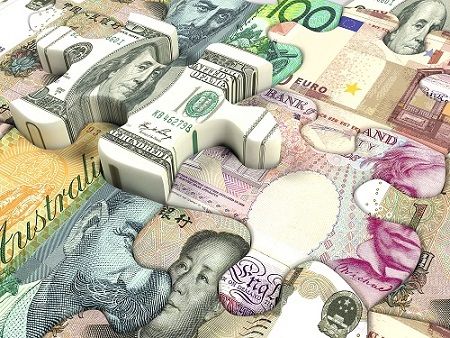Asian Currencies Flat as Dollar Weakens on Stronger September Rate Cut Expectations

Most Asian currencies steady as dollar rebounds amid Fed rate cut speculation.
Yuan steady; AUD, KRW steady; rupee near low amid U.S. tariffs; dollar index little changed.
Dollar falls on softer CPI; 93.6% Fed cut chance; yen steady amid weak PPI data.
Asian Currencies Stabilize Amid Dollar Weakness
Most Asian currencies showed limited movement on Wednesday as the U.S. dollar continued to recover from overnight losses following softer-than-expected U.S. consumer inflation data. This data fueled speculation on a potential Federal Reserve interest rate cut in September.
In the previous session, regional currencies gained momentum, supported by a renewed 90-day trade truce between the U.S. and China, boosting market sentiment.
However, by Wednesday, most currencies appeared to have lost steam amidst ongoing uncertainty around the impact of U.S. trade tariffs on the global economy and upcoming economic data releases. Nonetheless, the dollar's recent weakness helped many Asian currencies register some gains this week.
Key Currency Movements and Trade Developments
The Chinese yuan remained steady after earlier declines prompted by the announcement of an extension to the U.S.-China temporary trade agreement, with U.S. officials indicating that formal negotiations will resume soon.
The South Korean won edged down 0.1%, while the Singapore dollar held firm. The Australian dollar stabilized after gains on Tuesday, despite the Reserve Bank of Australia's recent 25 basis point rate cut, which was accompanied by warnings of possible further easing due to easing inflation and slowing growth.
Meanwhile, the Indian rupee hovered near record lows amid concerns over potential U.S. tariffs of up to 50% on imports from India. The dollar index also showed little change in Asian trading after dropping 0.4% the previous day.
Inflation Data Impact and Central Bank Outlook
The U.S. dollar's decline was driven by rising expectations of a September Fed rate cut after July's headline consumer price index came in slightly softer than anticipated. Although core CPI inflation increased somewhat more than forecast, this did not dampen market bets on easing monetary policy.
CME FedWatch data revealed the probability of a 25 basis point cut in September surged to 93.6% from 83.8% the day before.
Meanwhile, the Japanese yen traded slightly higher at 148.08 per dollar despite the dollar's softness. The yen's modest strength was offset by weaker producer price index data, which fell to an 11-month low in July. While the PPI slightly exceeded expectations, it raised doubts about the Bank of Japan's ability to further raise interest rates amid steadily declining inflation. The BOJ reiterated its intention to raise rates gradually in response to rising costs.
* The content presented above, whether from a third party or not, is considered as general advice only. This article should not be construed as containing investment advice, investment recommendations, an offer of or solicitation for any transactions in financial instruments.



